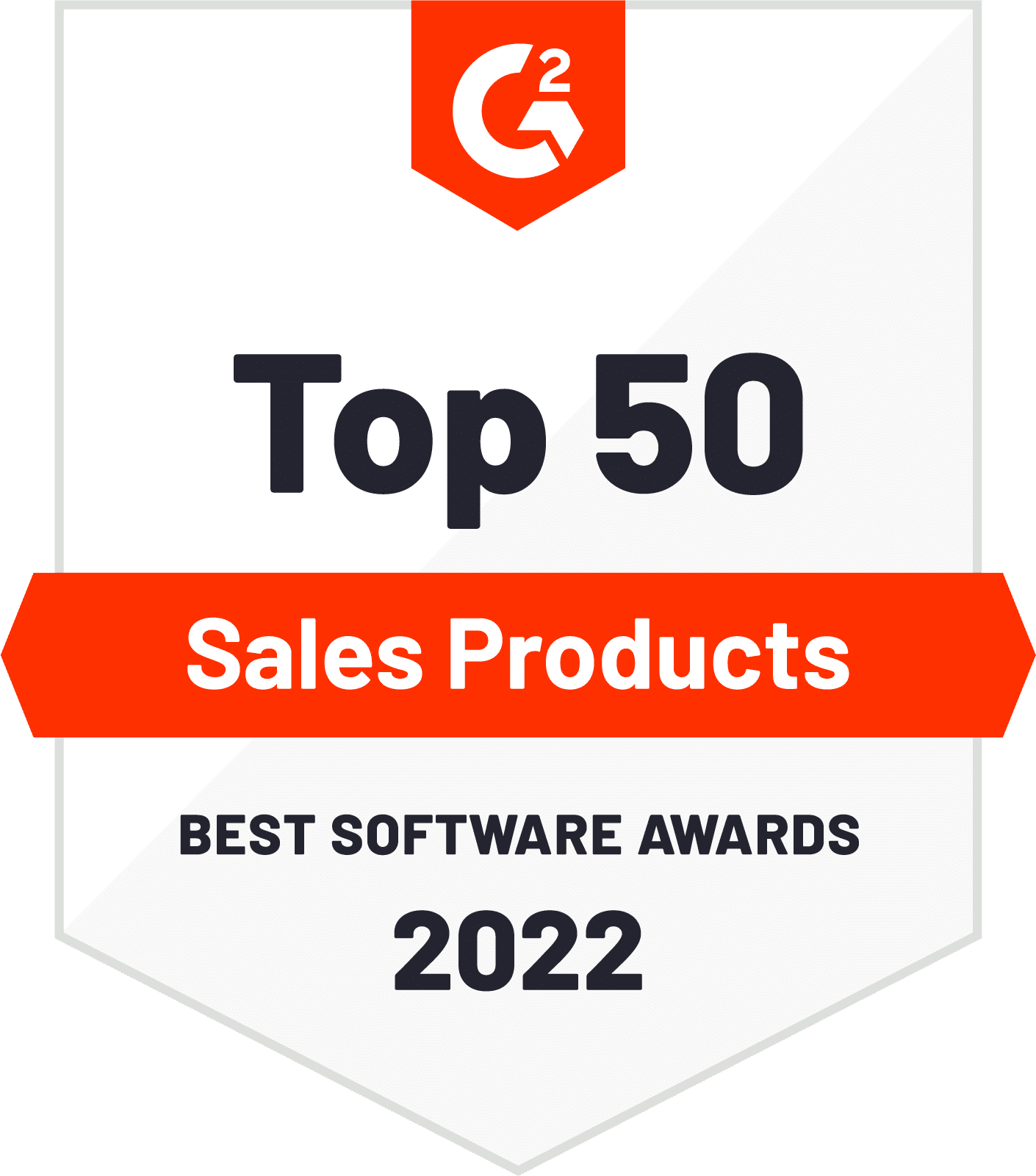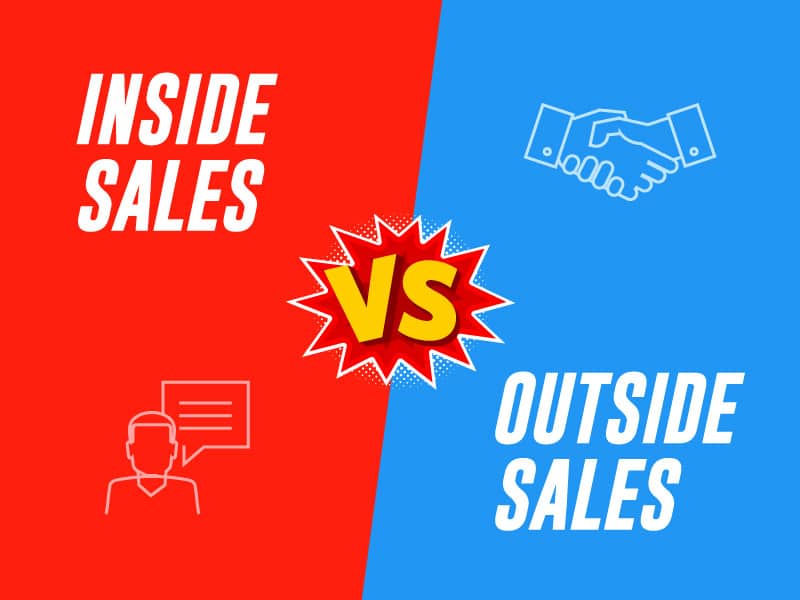
How to Get Into Medical Device Sales (Key Strategies for Success)
Dreaming of a rewarding and challenging career in medical device sales? You should be! The medical device industry is poised to reach nearly $800 billion in global annual sales by 2030. If you’re looking to cut yourself a piece of that pie, then you’re in for an exciting journey! In this guide, we’ll explore the ins and outs of becoming a medical
















The sales world is huge, and if you’re in the biz, you’ve probably dabbled in both inside and outside sales roles. But if you’re thinking about switching to outside sales, or just want to step up your game in field selling, you’ve landed in the perfect spot.
In this blog post, we’re diving into the world of outside sales. We’ll explore effective strategies, essential skills, and the tools you need to not just survive but thrive in this growing yet demanding career path.
Ready to find out what outside sales really is? Let’s kick off this adventure and master the art of field selling together!
Grab a warm coffee ☕️ or tea 🍵 and let’s get started!
Download Now: The Big Blue Book of Field Sales
Outside Sales Reps — flip to the chapters on outside sales productivity, mastering the art of in-person selling, and how to shorten your sales cycle.
Get Your Free EbookDefining Outside Sales: A Closer Look
Notable companies such as Johnson & Johnson and Cisco Systems offer competitive outside sales positions, where salaries can vary significantly based on factors like experience, industry, and commission structure.
You get to travel, enjoy lots of freedom, and need a solid grasp of emotional intelligence. Typically, you’ll handle bigger, pricier accounts than those in inside sales. The real game-changer? Your talent for meeting clients face-to-face to close deals. This ability to connect personally with clients is what really makes you stand out. Successful outside sales reps thrive on crafting and sustaining direct relationships with potential customers.
The Role of an Outside Sales Representative
An outside sales representative, or sales rep for short, plays a crucial role by engaging directly with both potential and existing customers. Here’s a look at what their day typically involves:
This role is ideal for those who thrive on autonomy and are skilled in managing both their time and client relationships effectively. Organization and proactive engagement are key to succeeding in outside sales.
Key Factors Driving Outside Sales Growth
The boom in outside sales owes a lot to a few critical factors: the demand for personalized customer service, ramped-up competition, and the surge in digital technologies.
As businesses increasingly appreciate the impact of face-to-face meetings on forging deeper customer bonds, you, as an outside sales rep, need to tweak your strategies to keep up with the competition.
The shift towards digital tools has massively reshaped outside sales. Staying relevant and effective in your pitches now means getting on board with the latest digital solutions. For instance, using tools like Veloxy’s Salesforce Automation can drastically cut down on your manual workload and boost your productivity, making it easier for you to hit your targets consistently.
Essential Skills for Thriving in Outside Sales
To really excel in outside sales, you need a special mix of skills that blends sharp communication, adaptability, and solid problem-solving. Being a great communicator isn’t just about talking; it’s about making genuine connections. This skill helps you build strong, trust-filled relationships with your customers and your teammates.
Your problem-solving skills are just as crucial. They allow you to spot issues your clients or potential customers are facing, come up with customized solutions, and demonstrate just how valuable those solutions can be. It’s all about showing your customers that you’re not just there to sell, but to make their lives easier.
Building Customer Relationships
Building solid customer relationships is absolutely crucial in outside sales. The success of a salesperson hinges on their ability to establish and maintain direct relationships with potential customers.
Trust is the cornerstone of these relationships because when customers trust you, they are more likely to:
To forge these strong customer bonds, you need to be great at one-on-one interactions. It’s about really understanding what your clients need and delivering solutions that genuinely help them. This kind of personal touch not only builds trust but also strengthens rapport, smoothing out the sales process and boosting your chances of success.
By always putting the customer’s needs first and showing you truly care, you can create enduring relationships that don’t just lead to sales, but to loyal customers who come back time and again.
Navigating Autonomy in Sales
Autonomy characterizes outside sales, providing sales representatives with the freedom and self-management to plan their own time and tasks. However, managing autonomy effectively can be challenging, as it requires a high level of self-discipline, time management, and self-motivation. Establishing goals, maintaining a schedule, and utilizing time tracking tools are just some strategies that can be employed to manage autonomy effectively.
To foster self-motivation while managing autonomy, sales representatives can set rewards for achieving goals, break tasks into smaller components, and maintain organization. By employing these techniques, sales representatives can capitalize on their autonomy and attain success in the industry.
Leveraging Technology in Outside Sales
In today’s rapidly evolving sales environment, leveraging technology is crucial for outside sales professionals. Technology can help sales reps stay organized, automate processes, and increase efficiency, ultimately resulting in better sales outcomes.
By employing a multichannel approach, outside sales reps can engage with prospective customers more effectively and enhance sales performance. Tools like Veloxy’s guided selling feature can also help streamline communication and ensure that reps are reminded to take predetermined actions or automate communication with clients.
The Sales Process in the Field
The sales process for outside sales representatives involves prospecting and concluding deals, requiring a unique set of skills and strategies. Prospecting may involve consistent follow-ups, setting goals, and being knowledgeable about the product, while closing deals often requires a structured follow-up strategy, product knowledge, and familiarity with the sales territory.
Sales representatives should:
Prospecting Strategies
Efficient prospecting strategies for outside sales representatives include networking and utilizing referrals. Networking is essential for constructing new connections and capitalizing on existing ones, actively engaging in industry events, participating in social media, and utilizing professional networking sites such as LinkedIn.
Social media can play a significant role in prospecting strategies, allowing sales professionals to identify the most-used platforms for their ideal customers and share customer stories with marketing, while also providing an opportunity to leverage social proof in sales and research prospects and their businesses.
Another effective prospecting strategy is cold calling and cold emailing, which, when done correctly, can yield excellent results. To ensure that cold outreach is an effective prospecting tool in outside sales, the following steps are recommended:
By following these steps, you can increase your chances of success with cold calling in outside sales.
Closing Techniques
Finalizing deals in outside sales frequently demands a customized approach and potent negotiation abilities. Some of the most effective closing techniques include:
Negotiation plays a vital role in closing outside sales, as it establishes a connection between the buyer’s requirements and the seller’s offerings. Sales representatives must be skilled negotiators to effectively persuade and close deals, overcoming objections and demonstrating the value of their product or service to the customer.
Compensation Structures in Outside Sales
Compensation arrangements for outside sales representatives, including their sales salary, might encompass:
Providing competitive remuneration is crucial for drawing in top performers and retaining talent within the sales organization.
While comparing the costs of inside and outside sales representatives, one should take into account elements like:
While outside sales representatives may have higher costs due to travel and accommodations, inside sales representatives may have lower overhead costs, making it crucial to find a balance between the two types of sales roles when structuring a sales team.
Tools and Technology for Modern Outside Sales Teams
Modern outside sales teams depend on important tools and technology to enhance their sales performance and maintain competitiveness in the current dynamic sales environment. CRM software, for example, offers comprehensive insight into the sales pipeline, increases efficiency, and optimizes workflows in outside sales. Call tracking software enables the synchronization of voice software with other channels, allowing easier contact with prospects and providing useful context when following up with leads.
Lead generation software is another vital tool for outside sales teams. It assists in:
Ultimately, lead generation software helps improve sales performance.
The Evolution of Sales Models: Inside vs Outside
As the sales landscape has transformed, the roles and responsibilities of inside and outside sales representatives have persistently evolved and adapted. Inside sales focuses on volume, targeting SMB and mid-market buyers with products that are typically more cost-effective and require less consideration from customers, while outside sales emphasizes securing high-value, high-quality accounts and targeting major customers with a higher average contract value. The inside sales team plays a crucial role in this dynamic environment.
The evolution of sales models has also been influenced by technological advancements and changes in the way people do business. The pandemic, for example, has necessitated a rapid transition from in-person events to remote selling for sales teams, forcing outside sales teams to adapt to inside sales technologies and procedures.
As the sales environment continues to transform, it becomes important for sales organizations to remain flexible and adjust their strategies to cater to the constantly changing needs of their customers.
Structuring Your Sales Team for Success
Structuring a sales team for success requires a strategic approach that considers the unique strengths and challenges of both inside and outside sales representatives. By aligning sales goals and fostering collaboration between inside and outside sales reps, organizations can create a cohesive sales strategy that drives results and maximizes revenue.
It becomes important to provide the required resources, tools, and training to assist sales teams in their endeavor to attain sales targets and preserve a balanced work-life environment.
Aligning Sales Goals
Aligning sales goals across inside and outside sales teams is crucial for ensuring a cohesive sales strategy and maximizing overall business performance. To create a unified sales strategy, it is essential to set common goals, foster collaboration, provide autonomy, align sales strategies, and ensure regular communication between teams. Addressing common challenges such as marketing-to-sales handoff, disparate systems, inconsistent data, and misaligned goals can be achieved through improved communication and collaboration, integrated systems, clear data management processes, and aligned goals through regular communication and shared targets.
By synchronizing sales goals between inside and outside sales teams, organizations can witness:
Collaboration Between Inside and Outside Sales
Collaboration between inside and outside sales representatives is essential for achieving optimal sales performance and maximizing overall business success. Ensuring collaboration involves aligning sales goals, fostering teamwork, and providing ongoing support and resources for sales representatives. By working together, inside and outside sales teams can optimize time dedicated to identifying new prospects, providing real-time alignment between teams, forming strong relationships with customers, encouraging a collaborative process, and improving communication and collaboration between teams.
Addressing the common challenges faced by inside and outside sales teams, such as:
can be achieved through increased communication, collaboration, and support from sales managers and leaders. By fostering a collaborative environment, sales organizations can maximize their sales performance and drive continued business growth.
Transitioning from Inside to Outside Sales: A Guide for Sales Professionals
For sales professionals contemplating a transition from inside to outside sales, it becomes important to adjust to new responsibilities and challenges peculiar to the field selling environment. Adopting effective prospecting strategies such as:
is crucial for success in outside sales. Additionally, cultivating a customer service mindset and forming relationships with colleagues and customers can help facilitate a smooth transition.
To successfully transition from inside to outside sales, sales professionals need to develop new skills and strategies to handle the unique challenges of field selling. These include adjusting to fluctuating schedules, managing travel logistics, and maintaining a healthy work-life balance. By embracing these changes and focusing on building strong customer relationships, sales professionals can thrive in their new outside sales roles and contribute to the success of their organizations.
Balancing Act: Managing Travel and Sales Targets
Managing travel and sales targets in outside sales demands a careful balance, as sales representatives should effectively allocate their time and resources to cater to customer needs and boost sales performance. Effective time management practices for sales representatives include:
By implementing these practices, sales representatives can better manage their travel schedules and maximize their sales potential.
In addition to efficient time management, sales representatives can also leverage technology to manage travel logistics effectively. Some ways to do this include:
By implementing these strategies, sales representatives can maintain a healthy balance between travel and sales targets, ensuring the ongoing success of their outside sales efforts.
Cultivating a High Performing Sales Team in the Field
Nurturing a high-performing outside sales team involves a mix of hiring, training, and continuous support to aid sales representatives in realizing their full potential. Effective hiring practices, such as utilizing objective measurements and evidence-based decision-making rather than intuition, can help organizations recruit top-performing outside sales representatives. Providing access to comprehensive training programs can further enhance selling techniques, skills, and processes. Some examples of comprehensive training programs include:
Continual support of external sales teams, including offering feedback regularly, defining objectives and expectations, and providing incentives and rewards for meeting those objectives, is crucial for maintaining a high-performing outside sales team. Additionally, providing access to resources such as sales tools, technology, and training can help sales teams stay informed and motivated, ultimately driving increased sales and higher revenue for the company.
Navigating Challenges Unique to Outside Sales
Outside sales representatives frequently confront distinct challenges, including:
To address these challenges, sales representatives must develop effective strategies and utilize available tools and resources.
Sales representatives can optimize travel time, distance, and cost, align activities with sales objectives, streamline travel expenses, leverage technology, and remain organized to manage travel logistics effectively. Additionally, they can employ the following strategies to manage fluctuating schedules effectively:
By addressing the unique challenges of outside sales and maintaining a healthy work-life balance, sales representatives can achieve success in their field selling efforts.
Final thoughts on Outside Sales
In conclusion, outside sales is a dynamic and rewarding career path that requires a unique set of skills, strategies, and tools to succeed. By understanding the nuances of outside sales, effectively managing autonomy, building strong customer relationships, mastering the sales process in the field, utilizing modern tools and technology, and navigating the unique challenges faced by outside sales representatives, sales professionals can thrive in their field selling roles. It’s time to embrace the exciting world of outside sales and unlock your full potential as a sales professional!
Frequently Asked Questions
What is an example of outside sales?
Outside sales involve traveling to customers’ locations, such as their offices or events like conferences and trade shows, to make a sales pitch, demonstrate products, and create relationships. Cold calling and door-to-door sales are some of the main methods used in outside sales.
Is outside sales a hard job?
Outside sales can be challenging due to the need for independent working and good time management skills. However, having a system in place such as a daily schedule can help manage the job successfully.
Is outside sales better than inside sales?
Outside sales may come with higher costs due to travel and lodging, but often result in deeper customer relationships, bigger sales, and higher salaries. In fact, outside salespeople typically work on higher-value deals and have a 10% higher average quota than inside sales agents. Overall, outside sales appears to be the more profitable option.
What is an outside sales representative job description?
As an outside sales representative, you will be responsible for conducting face-to-face customer interactions out in the field with both potential and existing customers, providing the best possible customer experience as well as hands-on product demonstrations.
What are some effective prospecting strategies for outside sales representatives?
Networking, leveraging referrals, and utilizing social media are effective ways for outside sales representatives to reach out to new prospects.